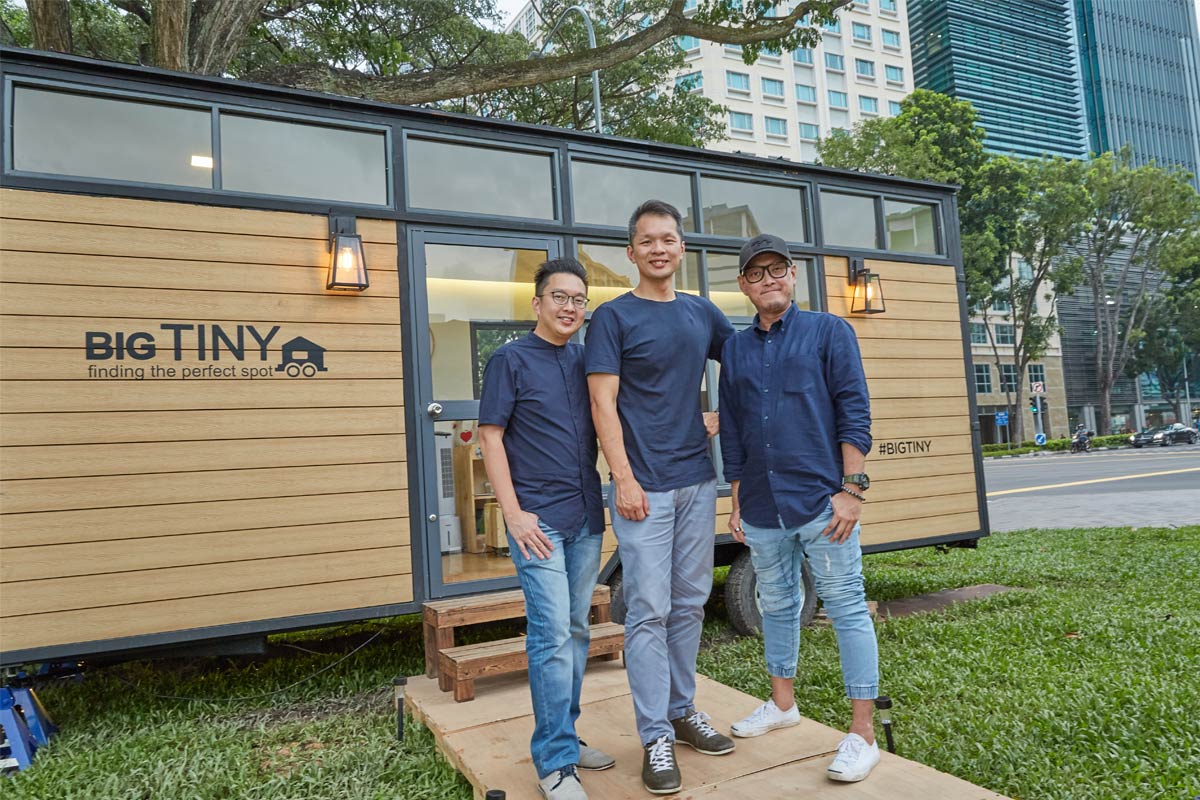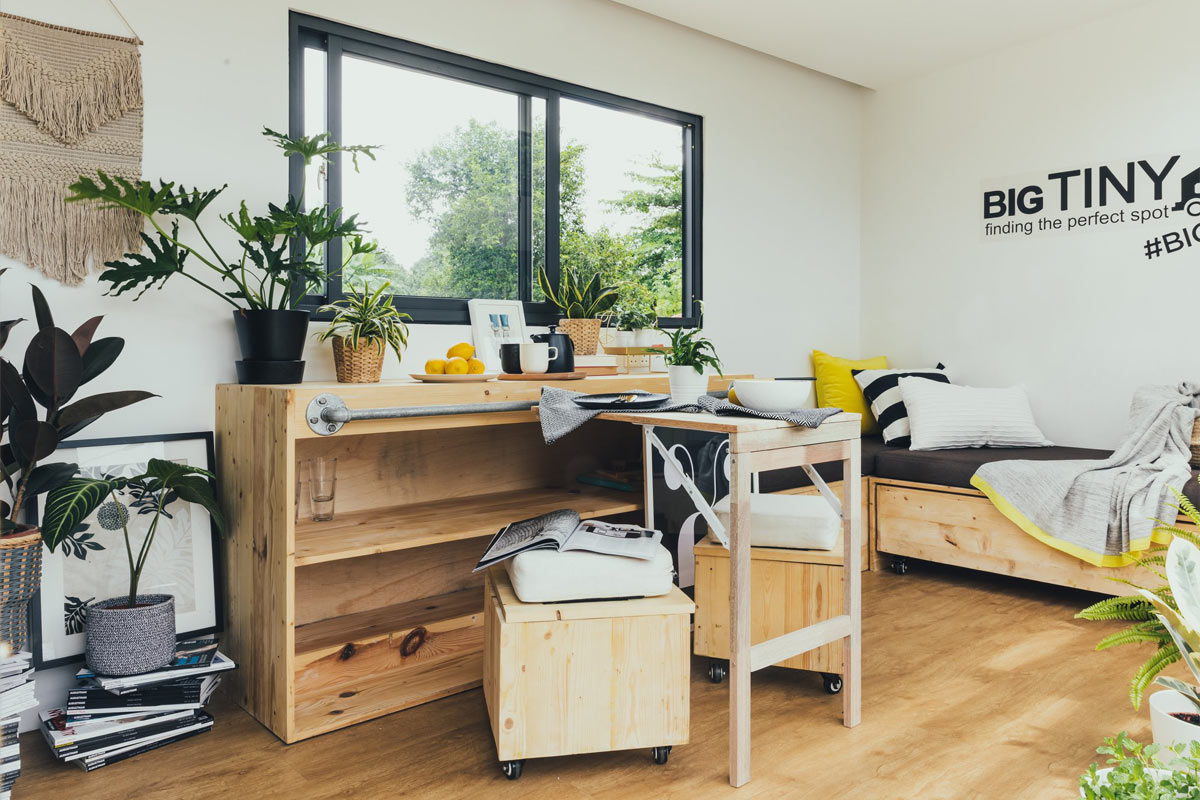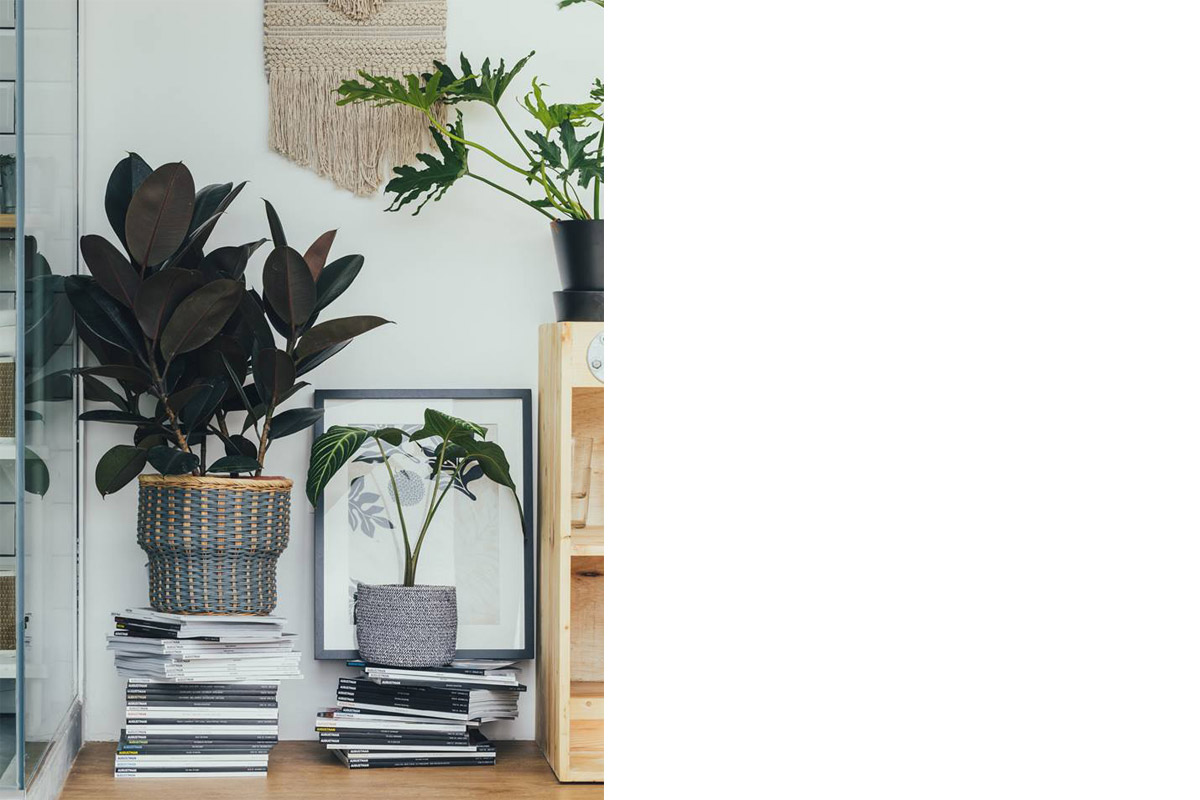We speak to one-third of Singaporean start-up Big Tiny about what prompted him and his partners to start their tiny home enterprise and what it’s like to live large in small space.
How did the idea of Big Tiny come about?
The dream started when one of our co-founders Adrian Chia was recharging himself on a farm in Australia. Accompanied by vast greenery and beautiful sunsets, it was the perfect getaway from the hectic and digital lifestyle of a city dweller. He wished that there would be more of such places for other city dwellers to recharge themselves, and when our other co-founder Dave Ng suggested using tiny houses as the ‘vehicle’ to realise this dream, it was how Big Tiny was formed.

Big Tiny co-founders (from left) Adrian Chia, Dave Ng and Jeff Yeo hope to provide more options for city dwellers to rest and recharge while being at one with nature.
How did you approach the design of these tiny houses?
We wanted to evoke the feeling of spaciousness with minimalistic designs (e.g. floor-to-ceiling windows for maximum natural light) and used multi-functional fittings to maximise comfort within the limited space that we had. The house is also designed to be eco-friendly. We use solar panels to power up electrical appliances from energy harvested from the sun, a composting toilet that turns human waste into usable fertilisers for our land partners, and a rainwater collection and filtration system that converts rainwater into clean water for use.
What are some tips and tricks you’ve picked up about designing for a tiny house?
One example would be to install cabinets that have sliding doors instead of swinging doors. And when choosing home decor, opt for pieces that can be hung on the wall to ensure that no floor space is obstructed.

Essential elements of tiny living, these tiny houses feature dual purpose and modular furniture like stools that hide storage spaces beneath, and a table that can be folded away when not in use.
Do you think the concept of minimal living is relevant in Singapore’s context?
Yes it is. Minimal living, in my personal opinion, is not only about living in small spaces, but it extends across to the broader lifestyle that we lead today. Singaporeans are becoming more eco-conscious nowadays, whether it’s bringing their own paper bags when they’re out grocery shopping or making the extra effort to recycle waste. All these are sterling examples of caring for the environment by reducing consumption, and is another form of minimal living. If everyone does their part and downsizes their way of living, we could be well on our way to an even cleaner and greener Singapore.
Part of tiny living is about having the ability to declutter. Do you have any decluttering tips to share?
Buy only what you really need and not what you think you will need, as it prevents you from cluttering up your living space from the start. Take note of items you seldom use, and after a certain period of time, either donate, recycle or discard them responsibly. Lastly, set aside five minutes daily to declutter so that you will not view it as a chore and give up completely.

The trick to living large in a small home is to furnish your space only with essential items.
What would you say is the best part about living in a Big Tiny tiny house?
Apart from the extremely scenic rural environment, the privacy you’ll enjoy in our cosy and comfortable settings while being close to friendly and always-ready-to-help land hosts and the many farm activities that you can choose from that ensure you will never have a boring moment, I would have to say that the best part about living in a Big Tiny tiny house would be the experience!
What are some takeaways you hope people will gain from staying in these tiny houses?
Firstly, we hope that people who stay in our tiny houses will appreciate being at one with nature – whether it’s in a large open field amidst a scenic backdrop or in front of a lake underneath the stars. Next, we hope to impart that less sometimes really is more, and that staying in a small space doesn’t mean you can’t live big. Lastly, as the WiFi in our tiny homes are optional, we want to encourage people to be present and to bond with each other over hearty conversations instead of furiously jabbing away at their phones.

Big Tiny’s houses also boast a fully equipped kitchenette and an air-conditioning unit.
What’s next in the pipeline for Big Tiny?
Besides Melbourne and Sydney, we are currently looking to launch Big Tiny houses in both Brisbane and New Zealand in 2018. We also hope to work with the relevant authorities in Singapore to bring our houses here to allow Singaporeans both young and old to bond and be at one with nature by staying in them.
Take a tour of these tiny houses by visiting the Big Tiny office at 15 Yishun Industrial Street 1 Win 5, #02-15.
This was adapted from an article originally published in the May 2018 issue of SquareRooms



